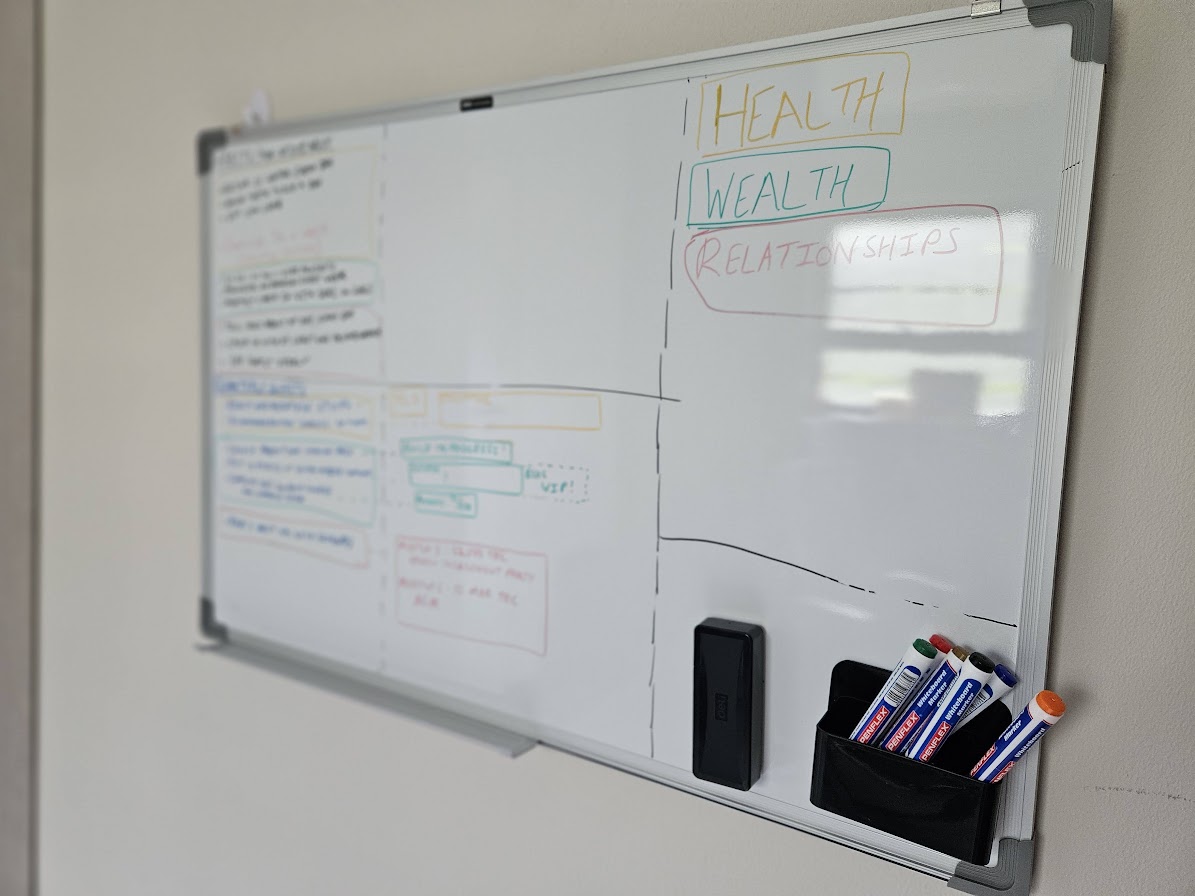Setting effective goals

Goals are a great way to drive personal growth (as I wrote about previously) and for achieving what we want in our personal and professional lives. However, setting good goals can be extremely difficult. This is often felt most when we fail to achieve the goals we set or chop and change our goals as time goes on, never completing them and always moving the goal “post.”
So, what makes a good goal? Over the years, I’ve developed approaches to goal setting that work for me, taking bits and pieces of frameworks I’ve come across. To define what a good goal looks like, I lean on the popular “SMART” goals framework to illustrate what goes into a well-defined goal.
S.M.A.R.T. Goals

SMART is a goal-setting framework, and each letter describes an attribute of a well-defined goal. I won’t bore you with repeating what they are - if you’re unfamiliar with the concept, there are endless articles on the matter.
Some things I’ve found through using SMART goals are that being specific enough (the “S” in SMART) is crucial - not being specific enough can make the rest of the goal-setting exercise extremely difficult and set you up for failure. Some goals are huge, and that’s okay. Break that goal down into sub-goals and work on each one to achieve success. Very closely related in importance is how measurable the goal is and if it is properly time-bound. Both of those set clear expectations on when and how the goal can be considered a success or failure.
Some examples of being specific enough:
- Instead of “Learn React dev,” break it down into goals of “Learning React state management,” “Learn routing in React,” “Learn how to host a React app,” etc.
- Instead of “Get this AWS Certification,” break it down into “Complete x modules of this course,” “Write a practice exam,” “Schedule and write exam,” etc.
- Instead of “Run a marathon,” create a program of “mini” goals that build you to that point, like “run 2km three times a week,” then “run 5km three times a week,” then “run 10km three times a week” until you are ready to actually “run the marathon.” (This ties in with goals being achievable.)
It’s okay to fail goals.
Lastly, it’s okay to fail goals. Yes, you read that right. It is difficult to set effective goals, and no one wants to fail. However, you don’t want to set goals that are too easy - your growth and results will be severely limited! Similarly, you don’t want to set goals that are too hard, as you are then bound to fail. You want goals that push you beyond your current capabilities just enough that you grow and learn. Arguably, that’s more important in some cases than actually achieving the goal!
Time boxing

Creating shorter timeframes for my goals has been a relatively recent change in my approach to goal setting. Previously, I would set goals for a 6-month or even 1-year period. What I found was that I often did not achieve those goals, at least not in the way I initially defined them. After diving into the work, I would find new ideas, techniques, or concepts that directed me to a different overall goal than what I originally planned.
There are many variations on this theme of shorter goals, but a video/course from Ali Abdaal resonated with me, and I now set goals quarterly. Quarterly goals (or quarterly quests, as he refers to them) give you enough time to work on or create something large enough to be meaningful but short enough that you will likely stick to it and achieve it, all while still letting you change tack afterward toward some broader overarching goal that you are striving for.
Remember to break the bigger, loftier goals into “sub” goals.
Using more specific goals helps with achieving this - remember to break the bigger, loftier goals into “sub” goals to make this possible! If you want to complete an intense certification program, break your goals into completing a certain percentage of coursework, scheduling your exam, revising for the exam, and then writing the actual certification exam. Or if you want to learn a skill like “React development,” set smaller objectives that are measurable, like starting with a simple to-do app to specifically learn how state works, then move onto a goal for routing, data querying, etc., until you achieve the specific skills you want in the very broad goal of “React development.”
This also applies to goals that are sometimes harder to work on and measure. For example, if you want to improve your skills in conflict resolution, you don’t want to go around starting conflicts! This is often opportunistic instead of something you can control. However, what I’ve found is that through being intentional with the goal you want to achieve, you spot situations that provide this opportunity.
Measuring success
There are two things I typically like to measure the success of goals by:
- The obvious one - did I achieve what I wanted in terms of the “Measure” I defined and the “Time” allotted to the goal?
- What was I able to learn through working toward this goal?
If a goal is difficult and new for you, regardless of the outcome, you are almost certainly going to be learning something.
Why I find this so powerful is that achieving the outcome of a goal is not always in your individual control, especially when you work in teams or complex domains. However, what you learn and take away from the experience will always stay with you, and reflecting on that can make you appreciate it for what it is worth.
This is especially important when setting goals that are difficult enough.
- If a goal is too easy and you succeed, you didn’t learn anything or grow much.
- If a goal is too easy and you fail, you at least learned what doesn’t work in that situation.
- If a goal is difficult and new for you, regardless of the outcome, you are almost certainly going to be learning something.
Overwhelmed? Just start.
The biggest learning from me earlier on in my goal-setting journey was to just start setting them. You very quickly learn what goals are too easily achievable and what’s not realistic, and you adapt and evolve for your next set of goals. Keep trying, reading goal-setting books and content, and reaching out to your peers, leaders, and friends to get some perspective, and carry on striving for what you want out of your personal and professional life.